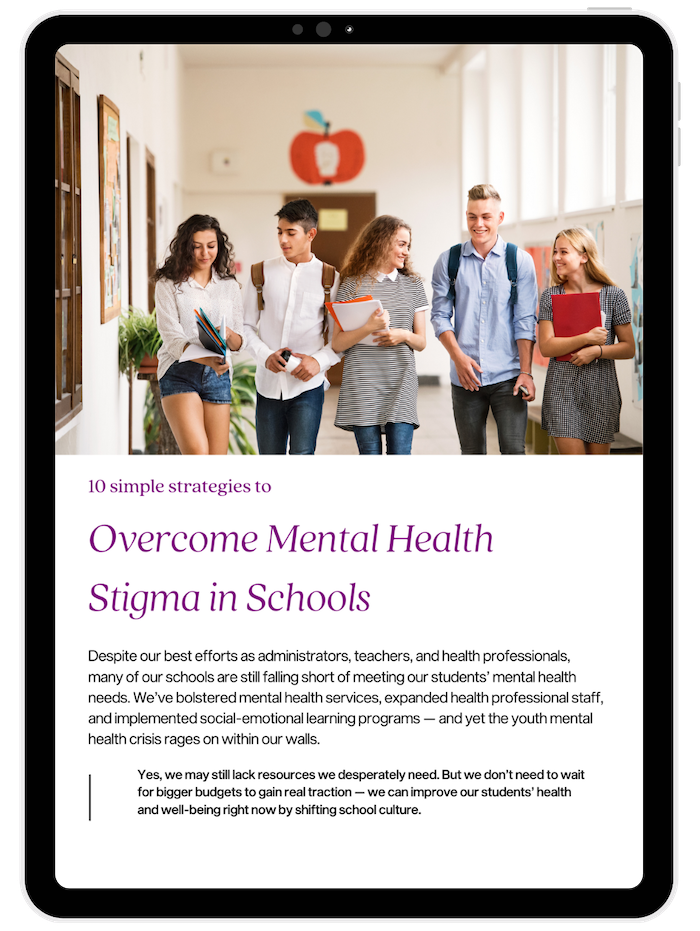Overcoming Mental Health Stigma in School
As the youth mental health crisis continues, schools have a responsibility to continue to respond to it. But limited time and resources make it difficult to feel like we are keeping up — muchless getting ahead. If we can’t budget new health professional hires or add more social-emotional programs, what can we do?
School therapist Carlos Mares posits that there is actually a lot we can do, no matter the school size, location, or demographics. We can implement strategies that break the stigma around mental health — which can have profound, rippling effects on our entire communities.

-1.png?width=800&height=582&name=Untitled%20design%20(6)-1.png)
In this white paper, you’ll learn 10 strategies, including:
-
How to assess the supportiveness of your school culture
-
Why a physical wellness space is vital
-
What language to use when talking about mental health with students
-
How to recruit both teachers and students as wellness advocates
-
What kind of education parents might need around mental health
.png?width=318&height=318&name=Carlos%20Mares%20(1).png)
Meet the Author
Carlos Mares, M.A./PPS/LPCC
Wellness Therapist
Because of who I am and what I represent, people closed many doors on me. I dreamed of becoming a therapist who could empower students to open doors for themselves, as I’ve learned to do. I use social-emotional healing arts to help provide equitable access to mental health support and to encourage students’ personal agency. I believe that is a way to knit fearlessness, acceptance, and connection into the fabric of school culture — and a way to break the stigma around youth mental health.
Trusted by Districts Nationwide









.png?width=400&height=92&name=Care%20Solace%20Signature%20(1).png)


